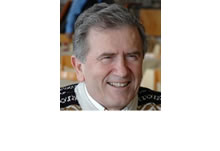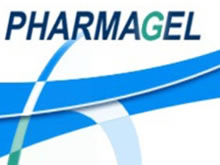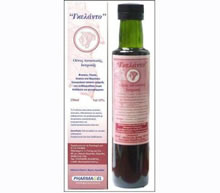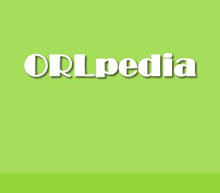
ΠΡΟΙΟΝΤΑ - NASONEX 50 micrograms/actuation Nasal Spray. Suspension
Presentation: Nasal spray suspension containing mometa-sone furoate (as monohydrate) 50 micrograms/actuation, a synthetic topical corticosteroid.
Uses: Adults and children aged 18 and over: Treatment of nasal polyps. Adults and children over the age of 12 years: For the treatment of the symptoms of seasonal allergic rhinitis or perennial rhinitis. Children 6 to 11 years of age: For the treatment of the symptoms of seasonal allergic rhinitis or perennial allergic rhinitis. In patients who have a history of moderate to severe symptoms of seasonal allergic rhinitis, prophylactic treatment with Nasonex may be initiated up to four weeks prior to the anticipated start of the pollen season.
Dosage: Nasal Polyposis: Adults and children aged 18 and over: The usual recommended starting dose for polyposis is two actuations (50 micrograms/actuation) in each nostril once daily (total daily dose of 200 micrograms). If after 5 to 6 weeks symptoms are inadequately controlled, the dose may be increased to a daily dose of two sprays in each nostril twice daily (total daily dose of 400 micrograms). The dose should be reduced following control of symptoms. If no improvement in symptoms is seen after 5 to 6 weeks of twice daily administration, alternative therapies should be considered. Efficacy and safety studies of Nasonex Nasal Spray for the treatment of nasal polyposis were four months in duration. Seasonal or Perennial Allergic Rhinitis: Adults and children over the age of 12 years: Two sprays (50 micrograms/spray) in each nostril once daily (total dose 200 micrograms). Once symptoms are controlled, dose reduction to one spray in each nostril (total dose 100 micrograms) may be effective for maintenance. If symptoms are inadequately controlled, the dose may be increased to a maximum daily dose of four sprays in each nostril (total dose 400 micrograms). Dose reduction is recommended following control of symptoms. Children 6 to 11 years of age: One spray (50 micrograms/spray) in each nostril once daily (total dose 100 micrograms). Clinically significant onset of action occurs in some patients within 12 hours after the first dose. Full benefit of treatment may not be achieved in the first 48 hours. Regular use is recommended to achieve full therapeutic benefit.
Contraindications: Hypersensitivity to any of the ingredients. Do not use in the presence of untreated localised infection involving the nasal mucosa. Patients who have experienced recent nasal surgery or trauma should not use a nasal corticosteroid until healing has occurred.
Precautions and Warnings: Use with caution, if at all, in patients with active or quiescent tuberculous infections of the respiratory tract, or in untreated fungal, bacterial, systemic viral infections or ocular herpes simplex. There was no evidence of atrophy of the nasal mucosa following 12 months of treatment. Patients using Nasonex over several months or longer should be examined periodically for changes in the nasal mucosa. If localised fungal infection of the nose or pharynx develops, discontinuance of Nasonex therapy or appropriate treatment may be required. Persistence of nasopharyngeal irritation may be an indication for discontinuing Nasonex. The concomitant use of additional therapy may provide additional relief particularly of ocular symptoms. There is no evidence of ΗΡΑ axis suppression following prolonged treatment with Nasonex. Patients who are transferred from long-term administration of systemically active corticosteroids to Nasonex require careful attention. The safety and efficacy of Nasonex has not been studied for use in the treatment of unilateral polyps, polyps associated with cystic fibrosis, or polyps that completely obstruct the nasal cavities. Unilateral polyps that are unusual or irregular in appearance, especially if ulcerating or bleeding, should be further evaluated. Patients who are potentially immu-nosuppressed should be warned of the risk of exposure to certain infections. Very rarely, nasal septum perforation or increased intraocular pressure have been reported following the use of intranasal corticosteroids. Nasonex should only be used in pregnant women, nursing mothers or women of child-bearing age if the potential benefit justifies the potential risk to the mother, foetus or infant. Growth retardation has been reported in children receiving nasal corticosteroids at licensed doses. It is recommended that the height of children receiving prolonged treatment with nasal corticosteroids is regularly monitored. If growth is slowed, therapy should be reviewed with the aim of reducing the dose of nasal corticosteroid, if possible, to the lowest dose at which effective control of symptoms is maintained. In addition, consideration should be given to referring patient to a pae-diatric specialist. Safety and efficacy of Nasonex Nasal Spray for the treatment of nasal polyposis in children and adolescents under 18 years of age have not been studied. Treatment with higher than recommended doses may result in clinically significant adrenal suppression. If there is evidence for higher than recommended doses being used, then additional systemic corticosteroid, cover should be considered during periods of stress or elective surgery. In a placebo-controlled clinical trial in which paediatric patients (n=49/ group) were administered Nasonex 100 micrograms daily for one year, no reduction in growth velocity was observed.
Interactions: A clinical interaction study was conducted with loratadine. No interactions were observed. Side Effects: Adverse effects commonly reported in clinical trials in adult and adolescent patients include headache, epistaxis, pharyngitis, nasal burning, nasal irritation and nasal ulceration. . Other less common and rarely reported side effects are listed in the SPC.
Package Quantities: 18g per bottle, supplied with a metered-dose manual spray pump actuator which delivers 50 micrograms per actuation. NHS Price: £7.68.
Legal Category: IPOMI
Marketing Authorisation Numbers: 0201/0216 (UK) Further information is available on request from the Marketing Authorisation Holder: Schering-Plough Ltd, Shire Park, Welwyn Garden City, Herts., AL7 1TW, UK. Telephone: +44 (0)1707 363636
Please refer to the full SPC text before prescribing this product. Adverse events should be reported. Reporting forms and information can be found at http://www.yellowcard gov.u.k (UK) and http://www.imb.ie (Ireland). Adverse events with this product should also be reported to Schering-Plough Drug Safety Department on +44 (0)1707 363773
Date of Revision of Text: October 2008




